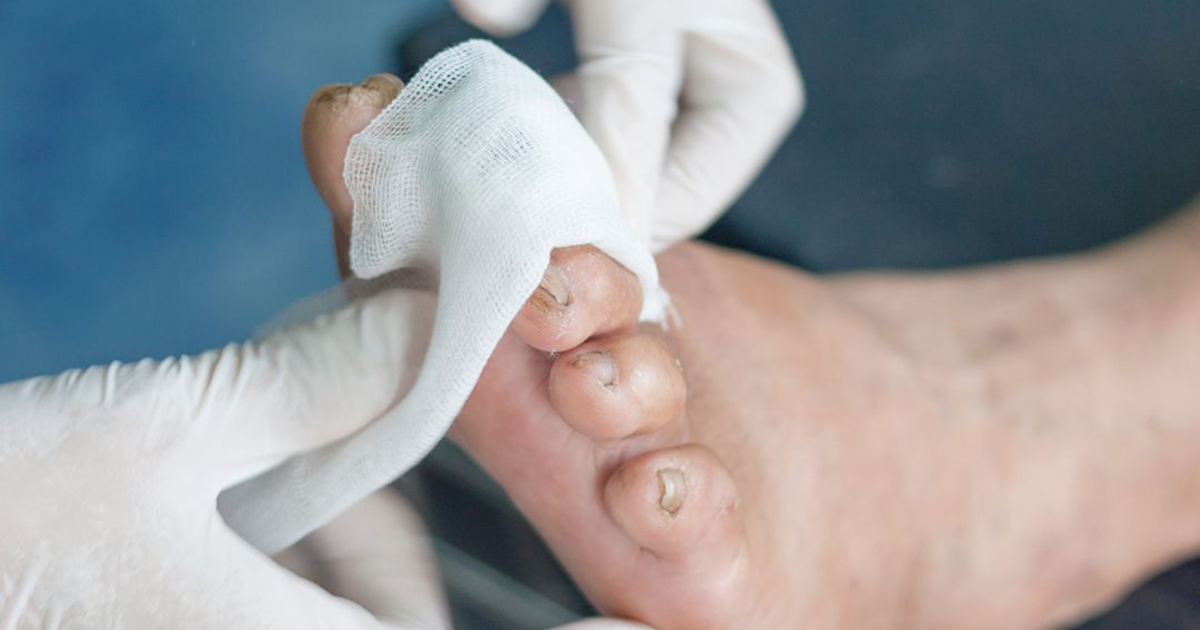Warning Signs of Diabetic Foot Problems: When to See a Podiatrist
February 18, 2025 •Podiatry Associates of Indiana

Diabetes can have a serious impact on your feet, often leading to complications that, if left untreated, may result in infection, ulcers, or even amputation. The good news? Early detection and proper care can prevent these issues. If you have diabetes, knowing the warning signs of foot problems is crucial. In this guide, we’ll cover the key symptoms to watch for and when to seek help from a podiatrist.
Why Diabetic Foot Problems Are a Serious Concern
Diabetes affects circulation and nerve function, which can make it harder for your body to heal even minor cuts or injuries on your feet. Over time, this can lead to:
- Neuropathy (Nerve Damage): Reduced sensation in the feet makes it easy to miss injuries.
- Poor Circulation: Slower blood flow means wounds take longer to heal, increasing infection risk.
- Infections and Ulcers: Small cuts or blisters can quickly turn into serious wounds.
- Foot Deformities: Conditions like hammertoes or Charcot foot can develop due to nerve and muscle damage.
Because of these risks, regular foot checks and prompt treatment of any issues are essential for diabetic foot health.
Warning Signs You Should Never Ignore
If you notice any of the following symptoms, schedule an appointment with a podiatrist immediately:
1. Numbness, Tingling, or Burning Sensations
These are classic signs of neuropathy. If you experience a loss of feeling in your feet, you might not notice cuts, blisters, or pressure sores—leading to infections before you realize there’s a problem.
2. Persistent Pain or Swelling
Unexplained foot pain, even without an obvious injury, could indicate an infection, poor circulation, or an underlying bone issue like Charcot foot.
3. Slow-Healing Cuts or Sores
A small cut that takes longer than usual to heal can quickly turn into a more serious wound. If you notice sores that aren't improving, it’s time to see a podiatrist.
4. Changes in Skin Color or Temperature
- Redness or warmth may indicate an infection.
- Pale or blue-tinted skin can be a sign of poor circulation.
Both require immediate medical attention.
5. Foot Ulcers or Open Wounds
A diabetic foot ulcer is an open sore that develops due to pressure, friction, or injury. These wounds can become infected quickly, increasing the risk of serious complications.
6. Cracks, Dry Skin, or Fungal Infections
Diabetes can make your skin more prone to dryness and infections. Cracks, especially on the heels, can serve as entry points for bacteria, leading to infections.
7. Ingrown Toenails or Fungal Nail Infections
Ingrown toenails can cause pain, swelling, and infection if left untreated. Fungal infections, which may cause thickened, discolored nails, are also more common in people with diabetes.
8. Changes in Foot Shape or Structure
If your foot appears to be changing shape, arch height, or structure, it could be a sign of Charcot foot—a serious diabetic complication where weakened bones fracture and collapse.
When to See a Podiatrist
Don’t wait for symptoms to worsen—if you have diabetes, proactive foot care is key. Make an appointment with a podiatrist if:
- You experience any of the warning signs above
- You have a wound that isn’t healing properly
- You notice swelling, redness, or warmth in your foot
- Your shoes are causing blisters or pressure sores
- You haven’t had a professional diabetic foot exam in the past year
Regular foot checkups can help catch problems early, preventing severe complications down the road.
Tips for Preventing Diabetic Foot Complications
Prevention is the best strategy when it comes to diabetic foot care. Follow these steps to keep your feet healthy:
- Inspect Your Feet Daily – Look for cuts, blisters, redness, or swelling.
- Wash and Moisturize – Keep feet clean and hydrated, but avoid applying lotion
- between the toes.
- Trim Toenails Properly – Cut nails straight across to avoid ingrown toenails.
- Choose Proper Footwear – Wear comfortable, well-fitted shoes with good support.
- Never Go Barefoot – Even indoors, protect your feet from injuries.
- Control Blood Sugar Levels – Keeping your diabetes well-managed reduces foot complications.
- Schedule Regular Podiatry Visits – A foot specialist can detect and treat potential issues before they escalate.
Take the Next Step for Your Foot Health
If you have diabetes, caring for your feet should be a top priority. Don’t ignore warning signs—early treatment can prevent serious complications. If you’re experiencing foot pain, wounds, or changes in sensation, schedule an appointment with a podiatrist today. Your feet will thank you!
Need Expert Diabetic Foot Care?
Our podiatrists specialize in diabetic foot management, from preventive care to advanced treatments. Contact us today to book your consultation and keep your feet healthy for years to come!

